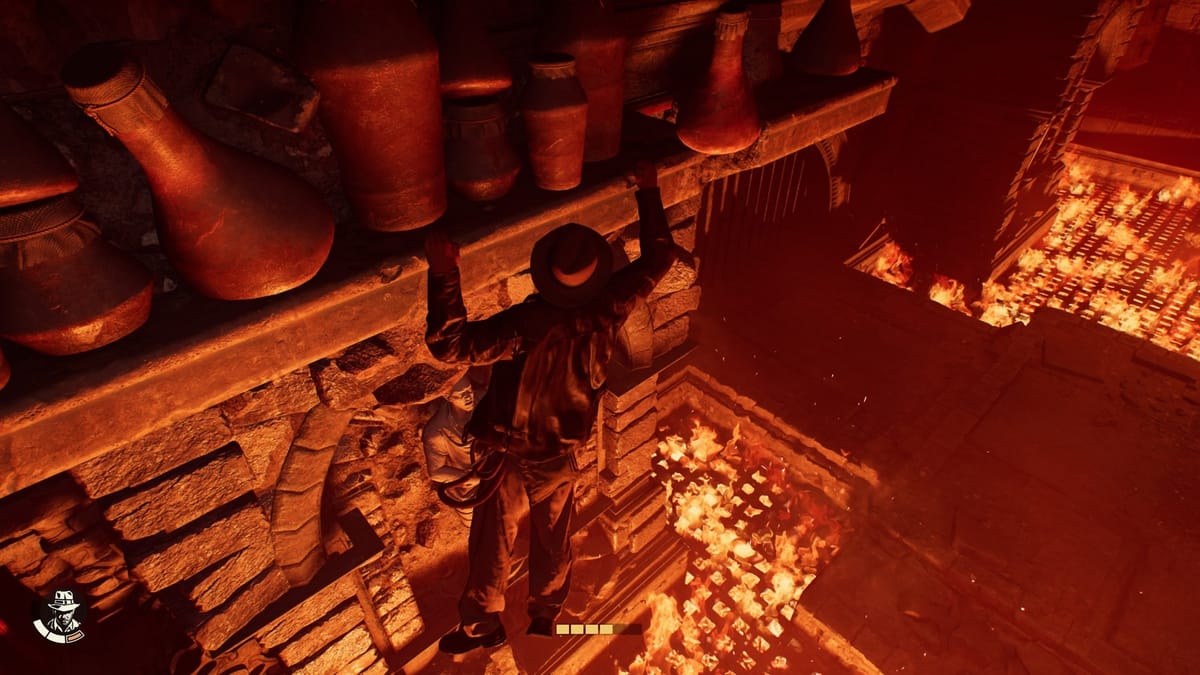
As its fashionably late arrival on PS5 implies, Indiana Jones and The Great Circle likes to take its time. I do too. When I think of Indy, though, I think of cool things delivered at an intense pace: action-packed spectacles, tense treks through tombs, and romantic flings. The Great Circle technically contains that stuff, but they are buried beneath thick layers of decidedly less exciting content. It’s less accurate to say that The Great Circle translates the movies into a game so much as it translates everything in between the movies into games. This odd decision leads to the slowest burn I’ve played in a while. More chill than thrill, The Great Circle requires an open mind to truly enjoy, although a whip and hat will also probably help.
There’s nothing inherently wrong with a slow game. I graduated from the school of Shenmue so I know that joy can be found in even the seemingly mundane moments of virtual life. The Great Circle seems to be approaching things from that angle – or at least an angle closely adjacent to it. Indy travels to a variety of locations throughout the game, which gives the player ample opportunities to “ooh” and “aahh” at its detailed recreations of culture. Whereas a game like Shenmue immerses you in its world with a game-ified translation of everyday life, The Great Circle aims to game-ify the excitement of encountering foreign lands.
Clearly the developers were proud of their recreations of places like the Vatican City and Egyptian deserts, so much so that a significant portion of the gameplay involves scouring them as thoroughly as possible for collectibles and story content. Most of The Great Circle consists of walking around reading notes and solving puzzles. Whether you’re solving puzzles to obtain codes to safes relayed via notes placed inexplicably close by or taking pictures of cats for XP, The Great Circle follows a rather loose definition of action adventure.

That works for me – there is indeed plenty to “ooh” and “aahh” over. The Great Circle creates an oddly compelling sense of adventure simply by leaning on the strength of its environments. I liked looking around, picking up notes, and sneaking into enemy tents to pillage their treasures. Each major city has a wide-open map full of things to discover, and the more it all comes together the more enthralled I was to uncover what still remained unseen.
However, after several hours of wandering around areas broken up mostly by expository cutscenes where people stand around and talk, I began to wonder: When does the actual game start? Where’s the exciting setpieces? Does Indy really photograph every cat he sees in between what you see in the movies?
It dawned on me over time that this slow-paced explore-em-up was the game. At the very least, it’s the aspect of the game I found most appealing. The Great Circle does have other things going on, but they are comparatively underdeveloped and fly by at a much faster pace. Hand-to-hand combat, stealth systems, and some light platforming break up the collectible sweeping and brain teasing.
Sneaking around ends up feeling a lot like normal exploration, except you’ll occasionally smack someone with a frying pan in between scour sessions. The enemy AI straddles the line between being braindead easy to avoid and frustratingly inconsistent. You can beat someone down with a shovel as loudly as possible and the guy next to him won’t notice, but if you throw a stick of dynamite far away from you, somehow everyone within a 50 mile radius will pinpoint onto your exact position.
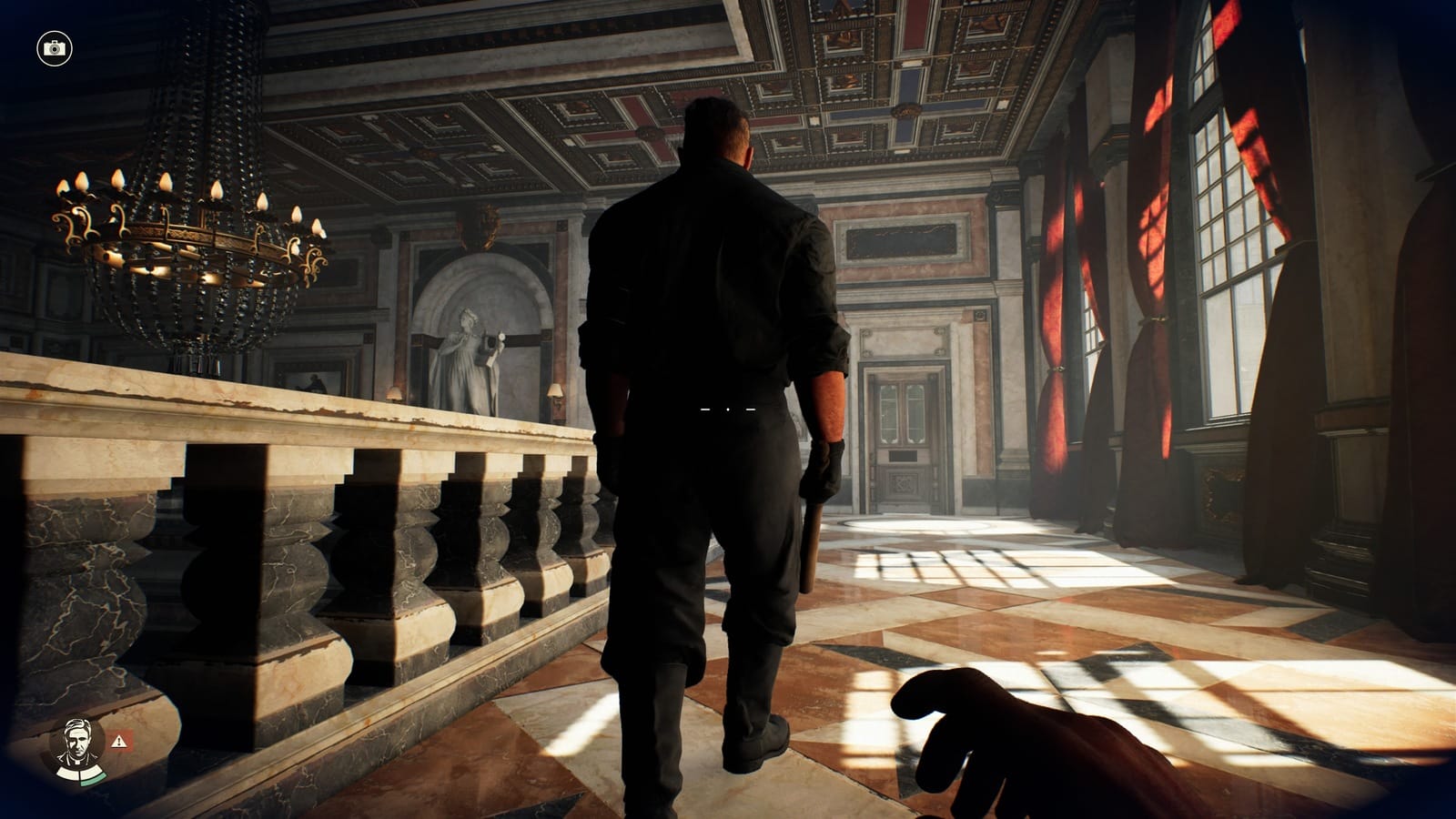
I never felt encouraged to be too creative; it’s easier and more rewarding to do things the boring way. Crouching and effortlessly beating down anyone in your direct path will see you through in a way that lives up to The Great Circle’s chill over thrill ethos. It’s a little sad, because I can see the groundwork for a more complex game here. The whip can create distractions. Most areas seem to have multiple routes, and there are plenty of weapons to improvise with. It simply didn’t seem worth the hassle to do more than move from point A to B, especially since the consequences for being caught end up being so lenient.
When someone spots Indy (or because the plot demands it), he’ll enter a melee combat mode. This, too, presents itself as having the potential for depth without fully committing to it. You can do blocks, counters, and directional dodges, implying some finesse and technique to the system. My boxing philosophy fell more in line with Bart Simpson’s, wildly swinging my arms around until my foes walked into them. If they get hit, it’s their own fault. Some enemies will block, forcing you to charge a punch instead of mash one out, and bosses will require you to occasionally dip your toes in some defense, but these inconveniences don’t push you to your limits so much as make sure you’re paying just a little bit of attention.
Even the platforming challenges don’t amount to much of a challenge. Most of the time your biggest obstacle consists of finding the next ledge to jump or whip onto. I do like the idea of incorporating the whip into Indy’s traversal. Simply latching onto things or swinging across gaps adds just enough flair to the experience to remind you that you’re playing as an action hero (the camera zooming out to 3rd person helps, too). Of course, watching Indy slowly pull himself up like an old man after reaching the ledge crashes you back down to reality.
As I witnessed Indy slowly pull himself up like an old man for the dozenth time, it dawned on me that this is a rather realistic portrayal of the character. Not just due to the overly long animations, the entire nature of the game itself. If Indiana Jones were a real person, he probably wouldn’t be a larger than life hyper-athletic specimen who can confront an army of nazis directly or climb mountains without getting tired. He would have to sneak around and try to stick to one-on-one fights. He would get tired from flicking his whip too much. He would spend most of his time walking around places, talking about stuff, and reading. He spends most of his time teaching, after all.
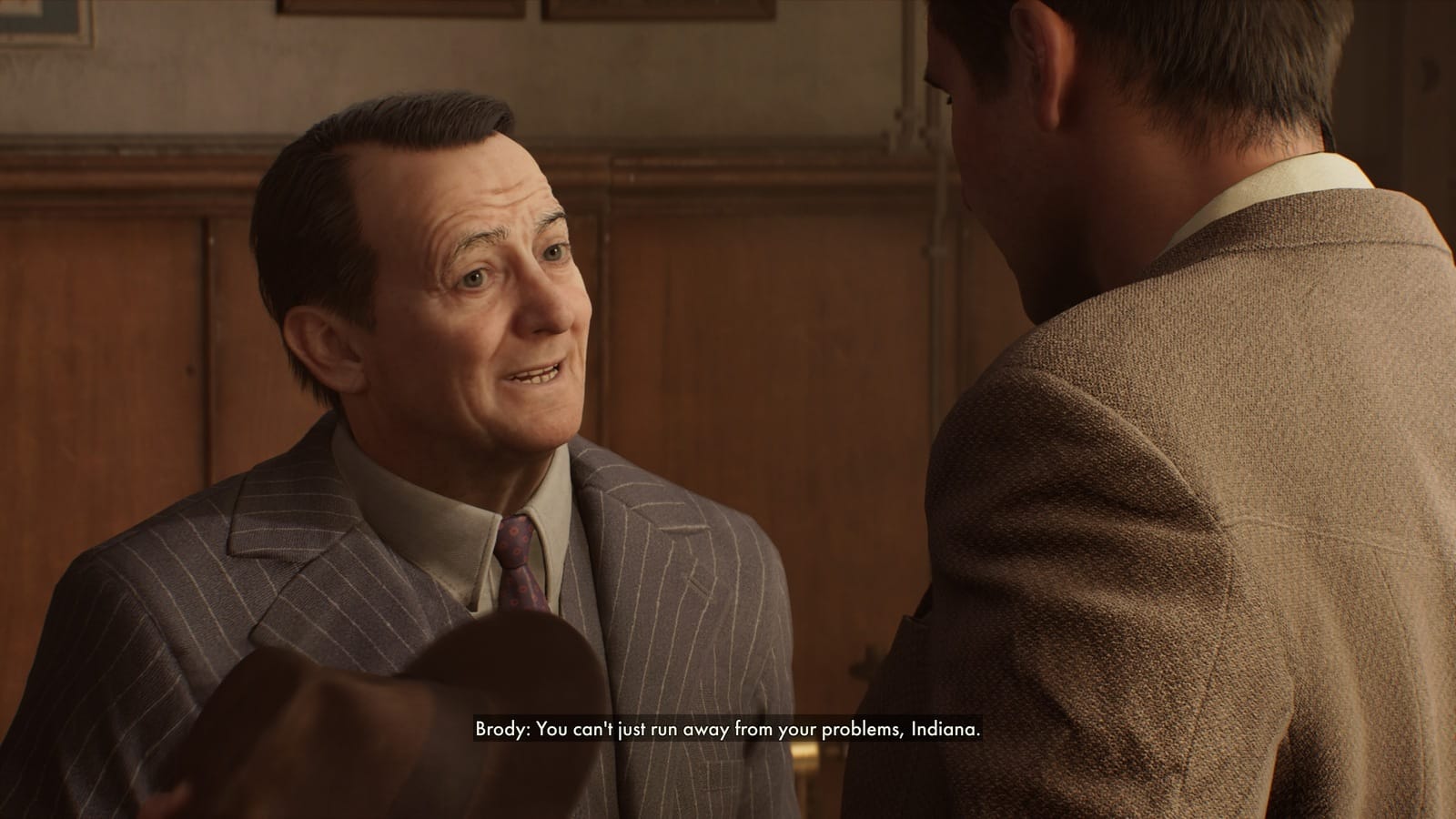
But who wants a realistic depiction of Indiana Jones in any medium, let alone a video game? While I generally respect each game being what it wants to be, when you use a licensed character you have somewhat of a responsibility to live up to the expectations associated with that character. Specifically in this case, I don’t feel like the developers truly captured the kind of Indiana Jones I’d want to play as. I get that the nature of video games perhaps threatened to push Indy too far into shooting gallery territory, but the attempts to curtail that portrayal went a little too far in the other direction. There’s plenty of space between a gun-toting war machine and a cat photographer, you know?
That odd portrayal extends to the overall story of the game as well. One of the most bizarre trends the later movies introduced was the idea of Indy becoming some fleshed out character who needs to settle down, as if his appeal has anything to do with things like that. The Great Circle follows in these footsteps by asking bold questions such as “what if Indy traveling the world going on cool adventures and doing what he loves instead of settling down with his girlfriend and focusing on his boring teaching career is actually bad?” The answer is simple: Indiana Jones is a cool action hero, not a real person, so it’s good. Easy! Next moral dilemma, please! Between the newer Indy movies and Uncharted 4, I don’t know how many times we need to retread this boring hypothetical of cool things not actually being cool.
To tell this story, The Great Circle features a strong focus on cinematic presentation that often evokes the idea that this game could really be an Indiana Jones movie. If it were a movie though, I wouldn’t consider it to be a particularly great one. 20 hours is a bit long for starters; the scenes where Indy wanders aimlessly around towns picking up notes could have used some trimming. Most of the movie scenes themselves consist of characters standing around talking, which was perhaps not the wisest move when the animations can’t necessarily keep up. In stills, Indy looks exactly like a reincarnated Harrison Ford. In motion, the stiff transitions between facial expressions reveal him to simply be a replicant wearing his skin.
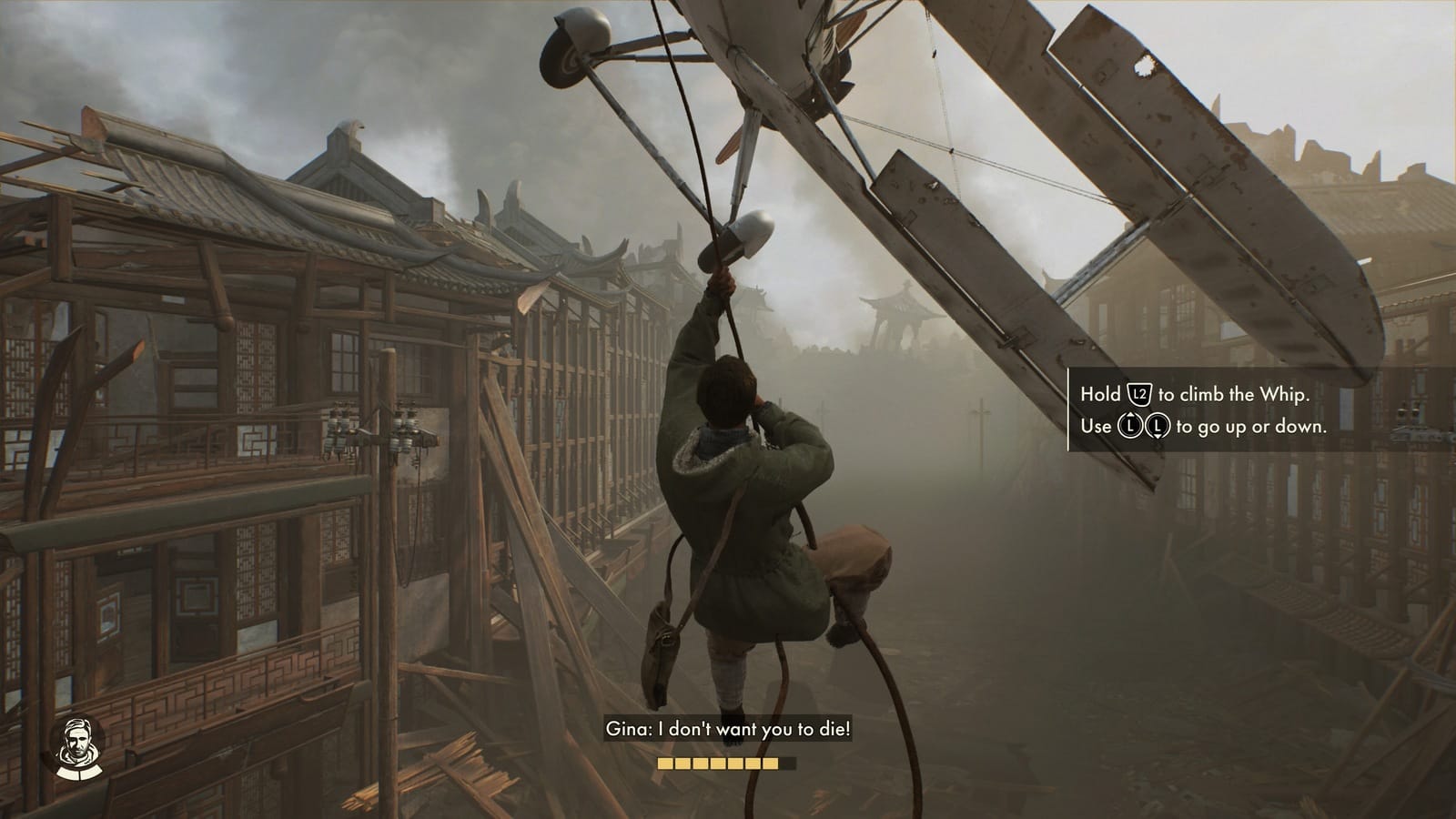
Eventually, you do get some tastes of the spectacle and setpieces that Indiana Jones movies are known for. These start to show up more regularly after the second major area of the game (about a dozen hours in for me), when realistically they should be happening after pretty much every slower section. In a movie, the tense exploration and dialogue scenes would explode into action and dramatic confrontations. In The Great Circle, solving puzzles in ruins instead usually leads to…more puzzles. Games like Uncharted and Tomb Raider got this balance right a long time ago, so I’m not entirely sure what Indy’s hang up is in the pacing department.
Even if you do want to be generous and say that The Great Circle simply emulates the pacing of the movies, it does so in a misguided way. If you look at the bones of this game, starting at Vatican City, then onto Egypt, and then the escalating setpieces from there, the vision makes sense. The stakes and action do steadily ramp up like a movie would. The problem is that in a movie, each of those slower sections would have been around 10-15 minutes each. In a game, that translates to about a dozen hours of slowness. Video games aren’t movies, no matter how badly some developers may want them to be.
The bigger problem is that when the setpieces do arrive, they’re easily the weakest parts of the game despite the fact it so desperately needs them. The combat stuff already sticks out as one of the weaker aspects of the game, and forcing you into a turret to shoot planes with weird hit feedback doesn’t help. Linear areas similarly don’t capture the strengths of the more open exploration-focused areas. While these spectacle-focused moments may be more visually interesting, when it comes down to gameplay they don’t compare favorably to walking around and finding cats, which is bizarre to say out loud but it’s true.
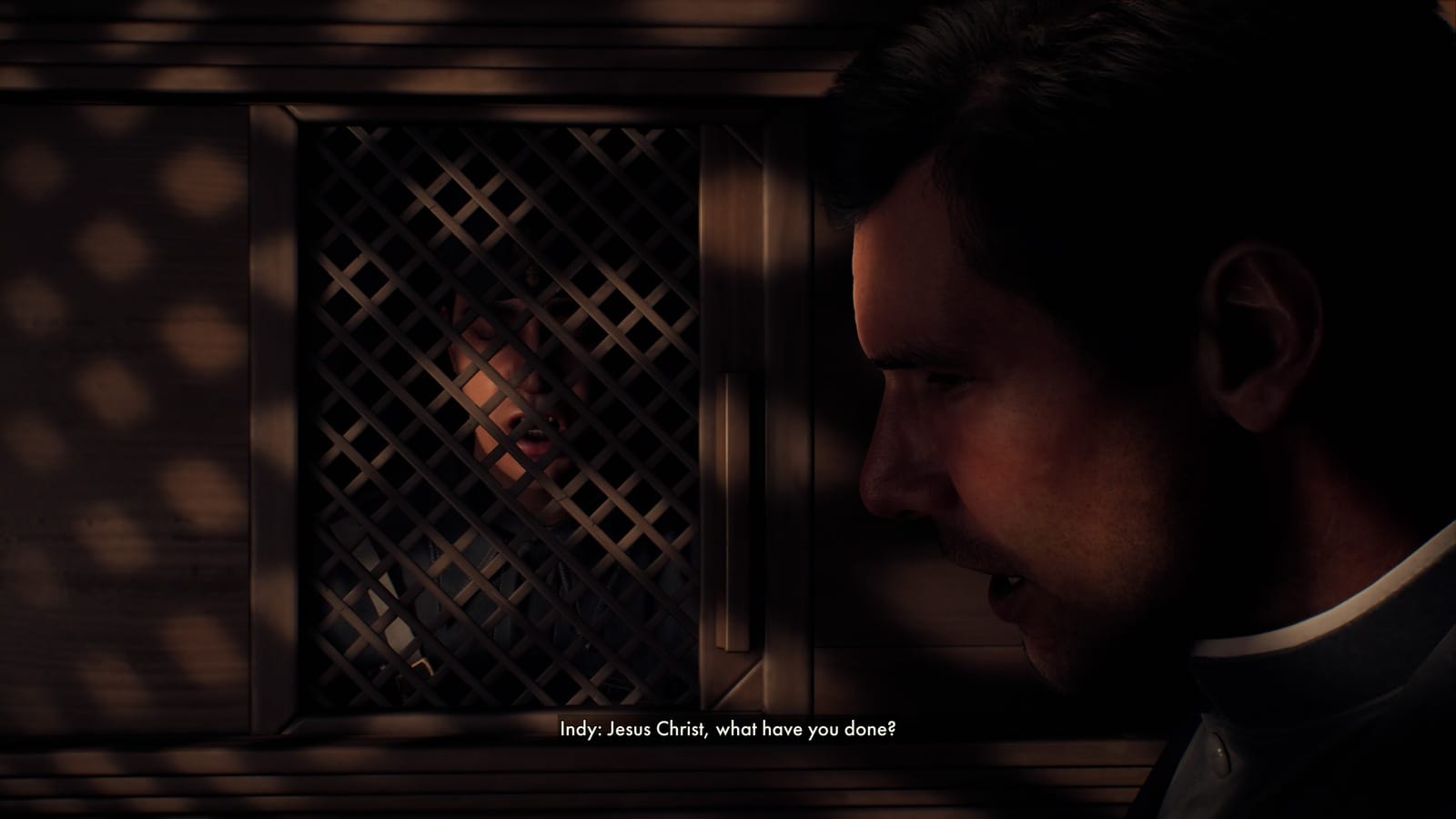
I don’t mean to rag on The Great Circle excessively – I’m mentioning all of this to highlight the main dilemma of this review. The appeal of The Great Circle has virtually nothing to do with being a great depiction of Indiana Jones as a franchise and far more to do with being a cozy exploration game. I ended up being okay with the fact that only mildly exciting things would happen and that they would only happen occasionally. I had a good time simply being a tourist with a penchant for whipping things.
As for whether it’s a destination worth visiting on PS5 in particular, I think it’s worth the detour. The PS5 version enhances and changes around some of the visuals, but what I really care about is the goofy adaptive trigger stuff. Thwipping the whip and whacking guys feels ever so slightly cooler, although admittedly these effects were not as dramatic as I was expecting. They’re noticeable, but they’re no Astro Bot.
Indiana Jones and the Great Circle
Alright
As a quirky, slow-paced adventure game, The Great Circle has its charms. As a faithful adaptation of the Indiana Jones franchise, it’s a somewhat misguided project. I enjoyed my time with The Great Circle overall, it’s just not the kind of game I can readily recommend to someone. You have to be chill, not necessarily in search of a thrill.
Pros
- Compelling exploration
- Fun puzzles
- Whip
Cons
- Weak combat and spectacle
- Odd portrayal of Indy
- Too slow for its own good
This review is based on a retail PS5 copy provided by the publisher.
